Design Blog
As professionals we have a responsibility to educate our clients about the architect's role and responsibility in the design and construction process. Cultivating an environment of education fosters trust, enhances communication, minimizes unnecessary frustration, and builds successful business relationships with our clients.
A good working relationship between architect and client is crucial to the success of any project. When working well with an architect, the savings are there from the start in terms of time and money.
Architect’s Role
While written agreements may contain the most important pieces of information about a construction project, the process of deciding what will be in
those agreements begins well before they are finally drafted and signed. It is important for us to educate our clients in understanding the architect's
roles and responsibilities on a typical project.
It is important that our clients understand early that an architect is a professional advisor. Lawyers and doctors do not guarantee the results of their performance, and neither do architects. Educating our client about the scope and limit of the architect's role and responsibility may help minimize erroneous assumptions and expectations.
Client’s Role
Architects can sometimes assume that clients have a broader understanding of the building design and construction process and of the parties' roles
and responsibilities in that process than they really do. This can lead to frustration and misunderstanding when the client does not perform the role
that the architect expects. We will endeavor to help our clients to fully understand the terms of the client-architect agreement, the owner-contractor
agreement, and the general conditions of the contract for construction. While a lack of knowledge does not relieve the client of contractual obligations,
it may lead to unnecessary misunderstandings, conflicts, and legal disputes.
Laying the Foundation for Success
We wish to establish an environment in which educating the client about the role of architects, building design and construction is routine. This
helps both the architect and the client to understand the process from a common vantage point. The time and energy invested is likely to be less than
that required to resolve disputes later and may have the added benefit of fostering a long-term relationship of trust.
The following checklist, while not intended to be exhaustive, may serve as a starting point for discussion and to broaden our client's knowledge.
- Architects provide services, not products. Those services are focused on meeting the expressed needs of a client.
- An architect is a client's consultant whose role is to provide design services and assist the client in securing from the contractor a project that is in general conformity with the architect's design concept and specifications.
- Contractors, not architects, are responsible for building the project. Architects assume responsibility for issues under their control, within reason. For example, architects do not control activity on the construction site and cannot be held responsible for job site safety or scheduling.
- Construction documents are not intended to thoroughly depict every element of the design; it would be cost-prohibitive to do so. Therefore, a reasonable number of questions from the contractor should be expected.
- It is not possible to anticipate every possible circumstance or physical condition that may arise during construction. Change orders are likely to occur on any project. Clients should anticipate changes by including adequate contingencies in the construction budget to cover the cost of the changes.
- Changes to the project program or design may require the architect to expend additional time, for which the architect is fairly entitled to additional compensation.
- Architects produce only approximate cost estimates-not fixed, unchanging, or guaranteed cost estimates. Architects have no control over, or special knowledge of the costs of materials, labour, fuel and equipment.
- Architects do not manufacture or install the project components they specify, nor can they guarantee those components.
- Construction phase observation services are intended to determine general conformity of the construction with the plans and specifications. Certifications are not intended to detect every minor deficiency.
- The architect and the client must share a mutual understanding of the client's goal for the project, the professional services being provided and the client's expectations of the architect.
- An architect's performance is measured against the professional standard of care, not an arbitrary idea of perfection.
ALIGNING EXPECTATIONS
We want to take the opportunity to align architectural design and client expectations and to give the project team some options for managing the
risks, and to define how we, as designers, can meet or exceed those expectations in order to have a satisfied client and a successful project outcome.
The Standard of Care
Designing a new or renovated building can be a challenging undertaking. Despite the best efforts of the design team, mistakes will occur. No architect
or engineer in the business can guarantee perfection. If they did, no insurance policy would back it.
Practicing architects and engineers provide a professional service based on years of education and experience. By entering into a contract with our clients, we imply that we possess the "standard skill and ability" necessary to serve the owner's needs. Nevertheless, there is no guarantee of a perfect plan or even satisfactory results. Instead, architects and engineers are expected to use "reasonable and ordinary care" in the practice of their profession.
In managing the design and construction efforts of any project, one of the most common challenges we face is coaching our clients is on realistic expectations for design documents and construction. A good starting point is to draw comparisons to other professions that apply a "standard of care." For more than a century, the law has viewed architectural and engineering services similar to professional services provided by physicians and attorneys.
Some clients have a tendency is to view architectural and engineering services no differently than lawn care services that guarantee weed-free results. This is especially true in this age of consumer rights and protections, where "satisfaction guaranteed" rules the day.
It is generally accepted that a surgeon cannot guarantee a perfect procedure or a complete recovery, and an attorney cannot guarantee a favorable judgment or verdict. Instead, the expectation is that they will apply their professional knowledge and experience in a competent manner that best serves the interest of their patients or clients, regardless of the ultimate outcome. Architects and engineers, like physicians and attorneys, cannot guarantee the results of their service.
Errors and Omissions
Errors and omissions are an inevitable part of any creative endeavor. Omissions usually add value to a project. Instead of being included at the
time of contract award, the building improvement that was "omitted" from the bid package is picked up by a change order. Architects and engineers
will normally maintain that the owner should pay for omissions since the owner would have paid a higher contract amount at the time of award.
Design errors, on the other hand, are mistakes made by the designer that, when corrected, do not add to the greater value of the project. While a design error may be recoverable, clients should be aware of the industry and legal acceptance that there is no such thing as error-free design. Even a modest building design effort requires many individuals acting on hundreds of major decisions to coordinate the design of hundreds of building components. A design effort is a unique, one-time creative endeavor that does not have the benefit of product testing. To expect a perfect design would be like believing software will function faultlessly without beta testing.
Buildings are becoming increasingly complex, and are designed on ever-shortening timelines. The demands placed on the construction industry to keep costs low, while at the same time fast-tracking their services, increases the risk that errors will result.
RISK MANAGEMENT
It is possible, however, to manage the risk of errors and omissions and the first step is to budget adequate project contingencies. Clients also
need to be aware that there are other methods available to manage the risks of errors and omissions. These include securing liability insurance,
employing third-party review services, using the design/build delivery approach, and modifying contractual language. Each option comes with related
costs and benefits.
Construction Contingency
It is important to establish a project budget contingency for the changes, errors and omissions, unknowns and unforeseen conditions that will
surely arise during the course of the project. Renovation projects should carry higher contingencies as the incidence of unknown conditions
is considerably greater.
Professional liability insurance
The cost of professional liability insurance is typically built into our design fees. The client has the option of purchasing a project insurance
policy that typically provides a higher level of coverage, but at a correspondingly higher cost to the owner.
Third-party review
The client also has the option to employ a specialty firm to review the documents prepared by our design team. While some clients argue that this
should be a basic service already provided by the designer, the reality is that the architect and engineer are usually too close to their work
and driven by other forces, to step back and review their work. This is especially true during the waning days of the construction document phase
when the architect and sub-consultants are racing to complete their work and wrap it together in a bid package.
The cost of a plan review team can run $20,000 or more for multimillion-dollar projects. This investment will often pay for itself many times
over in cost-avoidance savings. It is a "pay a little now" instead of "pay more later" proposition. Rather than create another project budget line
item for these services, funding for these cost-avoidance services can come from the project contingency budget, based on the premise that it will
reduce exposure to change orders.
The architect's role is to analyze the risk from a professional point of view and provide information to enable the client to assume, reject,
or transfer the risk; the actual decision rests with the client.





